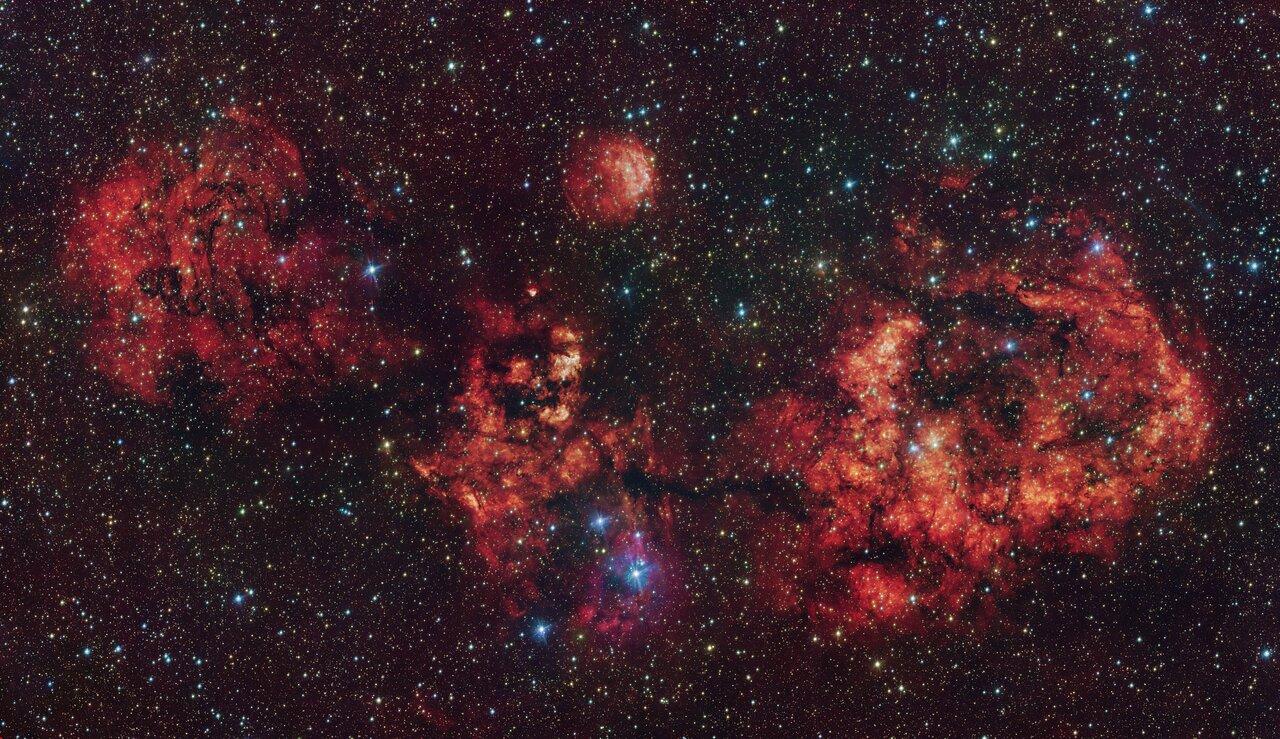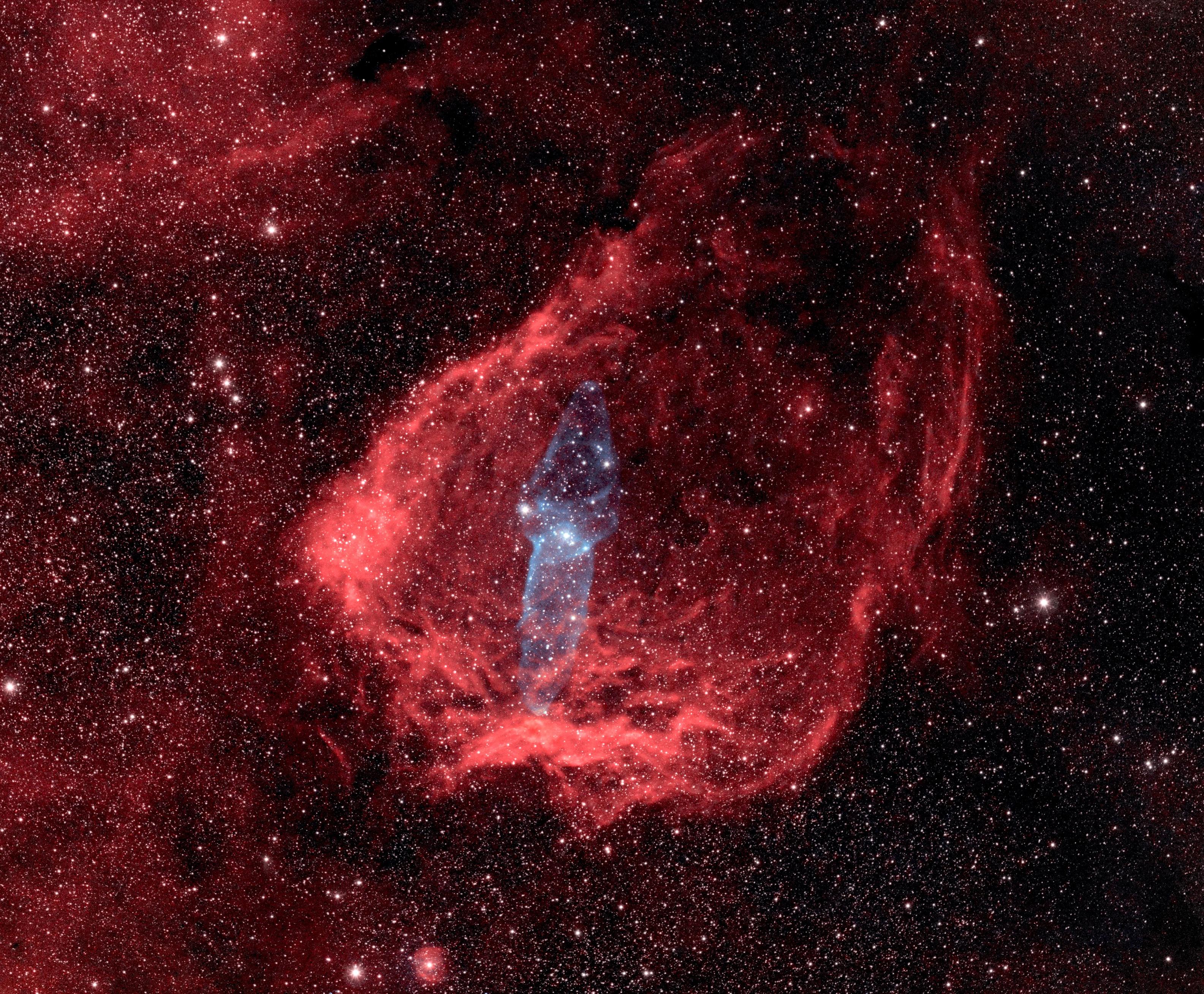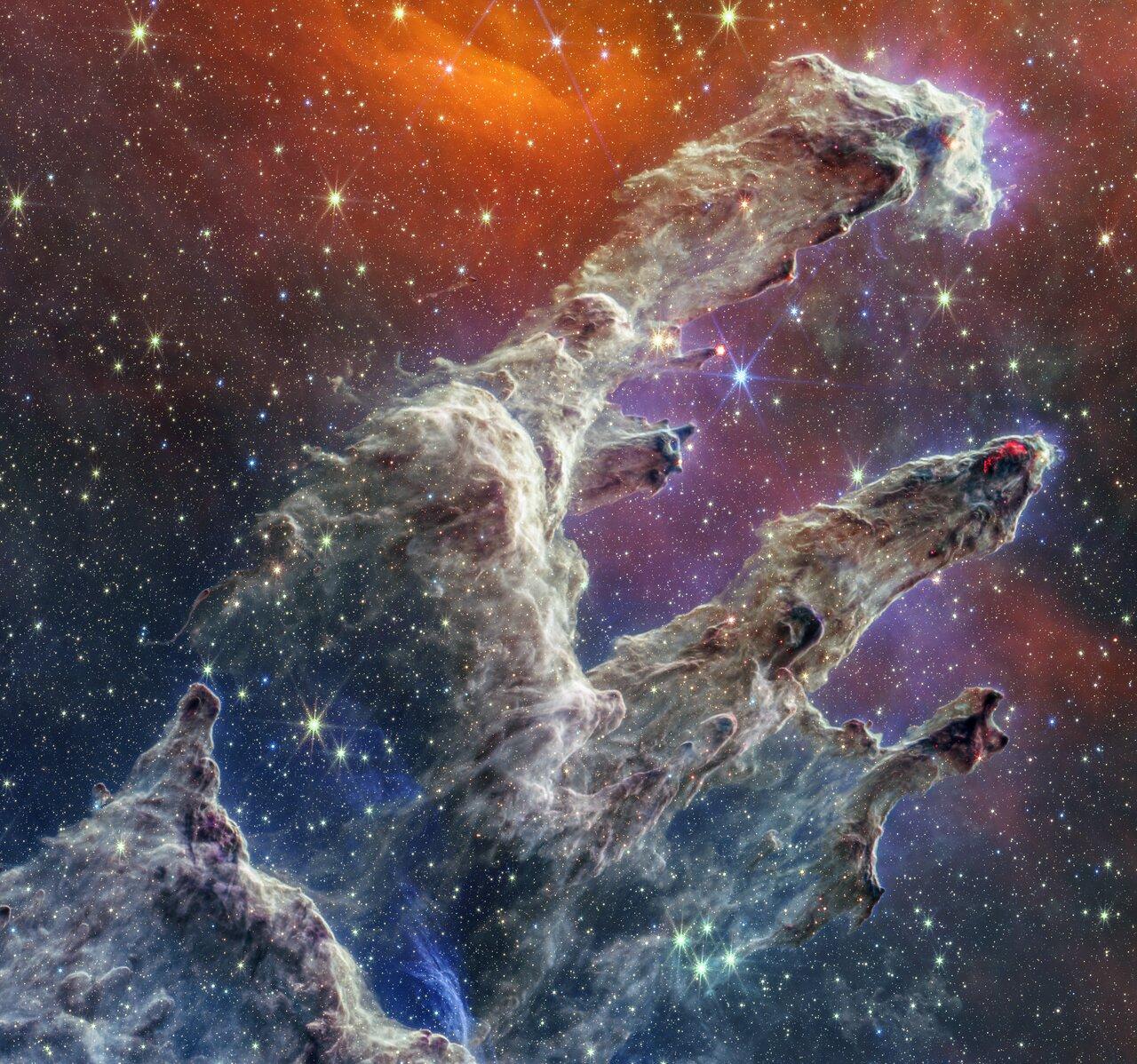The Bat Signal Nebula, just released by the European Southern Observatory.
Discussion
A particularly weird one: The Flying Bat Nebula has the Squid Nebula inside of it.
Is the bat carrying a squid? Did it swallow a squid whole? Somebody needs to work out the mythology here.
Finally, there's this iconic image from JWST. Sure, they can call it the "Pillars of Creation," but this is obviously a giant Monkey's Paw that has already curled two fingers.
https://esawebb.org/images/pillarsofcreation_composite/ #space #science #nature #halloween
Hiti
हिति , in Nepāl Bhāṣā, is the word for a shared community water tap. Even in modern Newar cities, these ancient structures still pour out fresh mountain water piped through ancient underground filters and conduits. They are a place to wash, to talk, to drink, to meet the locals: a nourishing, refreshing social-ecological place.



